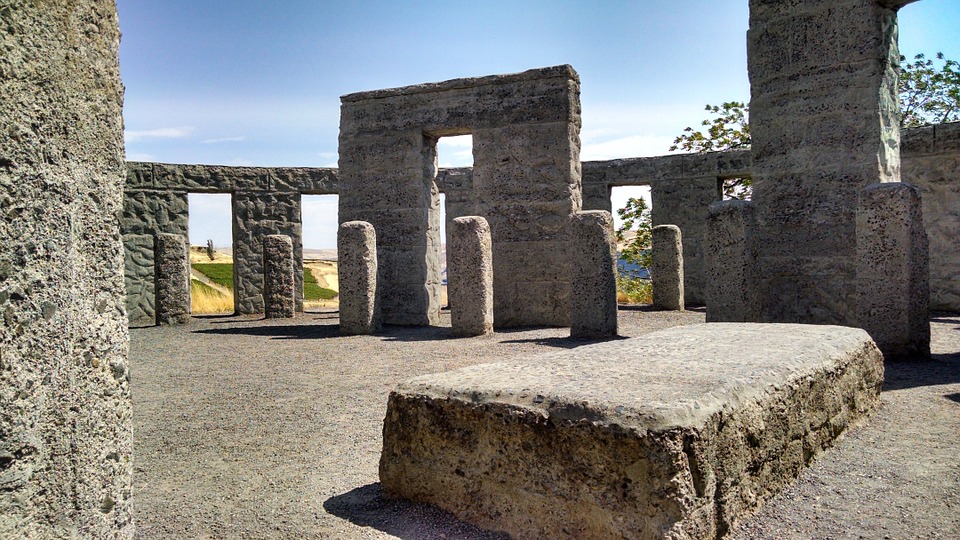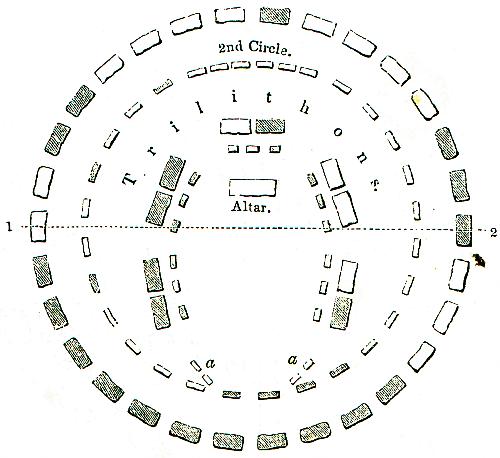The mystery of unique and tall stone circle has always attracted the attention of mankind. It is one of the favourite prehistoric monument for tourists across the world. Stonehenge is situated in Wiltshire, England. It was once a ring of stones set within earthworks. This remarkable architecture still continues to confuse historians and visitors. To solve its mystery a lot of efforts and money has been invested in conducting extensive research about it. Despite a lot of research Stonehenge still continues to surprise historians with its interesting and hidden secrets. It is on the UNESCO world heritage site. We are far behind from understanding how those stones were put there. Here are 10 interesting facts about this historic monuments.
It is very Old
Stonehenge is considered to be one of the oldest prehistorical monument. It went through various transformations during its construction time. It slowly shaped into a ring of stones. The oldest remains can be dated back to 3100 BC. When a ditch of 6 feet deep was dug near the monument it gave us many details about its construction. The first stones to be raised at the site were between 2400 and 2200 BC. Over a period of years, the stones were rearranged and new ones were added. Present formation of Stonehenge which continues to attract visitors was created between 1930 and 1600 BC.
Stones travelled a long way for Stonehenge
The giant and heavy stones which were used to build this historical monument travelled a lot of distance. Monument’s smaller blue stones which weigh up to 4 tons are linked to Preseli Mountains of Wales. These stones were quarried at a town near Welsh town of Maenclochog. They were then transported to Wiltshire. These giant stones have to be moved from Preseli Mountains to the construction site covering a large distance. The method used for the transportation of stones at that time makes it even more interesting.
Stonehenge may have been a Royal cemetery
The early use of this monument is still questionable but historians believed that it was once a cemetery. A team of archaeologists excavated the remains of about 64 Neolithic people. They excavated remains of about 50,000 bones. These bones date back as 3000 BC. The 56 pits or ‘Aurbery Holes’ which were dug to excavate the remains have revealed many secrets. In the year 1923, there was a major discovery to support the cemetery claim. Until now the remains found were in the form of ashes. But in 1923, archeologist excavated a decapitated Anglo Saxon man from the 7th century. It suggests that Stonehenge was once a burial ground at the start of its history.

Its Purpose is Still Unknown
Stonehenge purpose of creation is still unknown. Though there are many theories which suggest different use of this historic monument none of them are verified. The first theory suggested that this monument was used as a cemetery for the coronation of Danish Royals. The remains founded at the monument also indicates the same. Some theory also suggests that Stonehenge is the model of the solar system.
The astronomical theory is backed by the interpretation of monument by different scientific approaches. It is believed that the monument is a prehistoric temple aligned with the movements of the sun.

Its Purpose is still Unknown
Stonehenge was once a complete Circle
The historic monument was a complete circle or not has always been a question of debate. Archaeologists have tried to solve this biggest question with the help of an unlikely source. In the year 2014 when drought hits England, the conservators didn’t have enough water to irrigate the entire grass around Stonehenge. The scarcity of water turned out to be a blessing in disguise. During drought, conservators began to notice odd and patchy marks in the surrounding area of the monument. The patches were marked for further investigation by archeologists. The areas pointed were further classified as a place where the stones had been previously present. Thus the result of investigation cleared the air over one of the biggest debatable questions.

Stonehenge Restored Plan.
Stones used are known as Ringing Rocks
The giant stones used in the construction of this historic monument is known as Ringing Rocks. The stones used in the construction are of two types. Large and vertical ones are Sarsen a type of sandstone. The smaller ones are known as Bluestones. These stones used in construction possess unusual acoustic properties. When they are struck they produce a loud clanging sound. This Ringing sound was one of the primary reason to use them in construction. It is believed in an ancient culture that such rocks contain Healing Powers. The place they were extracted ‘Maenclochog’ means a place for “Ringing Rocks”.
Stonehenge and Infamous Controversy of 1985
In the year of 1985, the clash between travelers and police officers is one of the biggest controversies of Stonehenge. It was a clash between a convoy of approximately 600 travelers and around 1,300 police officers. The clash lasted for several hours on 1 June 1985. It was initiated after travelers, who were traveling to set up the Stonehenge Free Festival were stopped by police. The police were able to stop them at a roadblock seven miles from the landmark. The travelers soon got offended and turned violent as they believed they were illegally stopped. It resulted in the conflict and 8 police officer and 16 travelers were hospitalized. More than 530 travelers were arrested making it one of the biggest Mass Arrest of civilians in English history.
It is a Popular Tourist Destination
Thanks to its mystery and beauty this prehistoric monument is a tourist hotspot. It attracts more than a million tourist in one year. Stonehenge is also the UNESCO world heritage site. It was opened for tourist attraction in the early 20th century. During its initial year’s, tourists were even allowed to climb and walk among the stones. It is even said that some special guest were provided chisels to collect some stone as apart of souvenirs. After some serious erosion, the monument has been allowed to be seen only from a distance. Exceptions are made during solstices and equinoxes. Where solstices are the longest and shortest day of the year. Equinoxes are days with equal day and night length.







